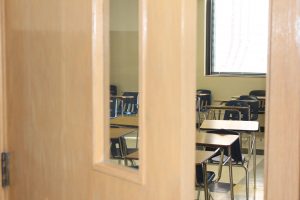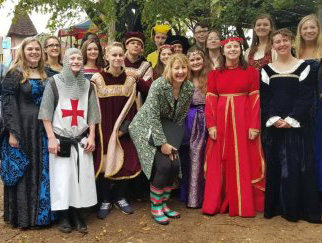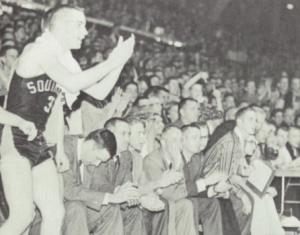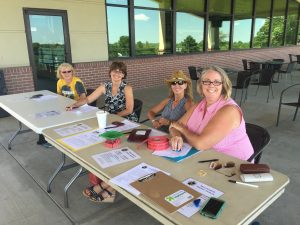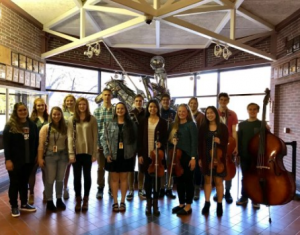Our Mission
The Mission of the Lincoln Southeast High School Community is Learning, Leadership, and Service
We will…
- develop an environment of honesty, integrity, and respect
- attain high achievement
- welcome and celebrate diverse talents and strengths
- facilitate learning
- use technology to enhance learning
- foster leadership
- serve the community, and
- continue the tradition of excellence
Lincoln Southeast High School Goals
- Increase student achievement for all students,
- Close the achievement gap for diverse students and socioeconomically disadvantaged students,
- Increase the graduation rate by 3% by 2016, and
- Increase reading comprehension for all students.
Building Profile
Download the LSE Building Profile
The staff, students, and community of Lincoln Southeast High School continues to pride itself in a commitment to excellence in academics, athletics, activities, leadership and service. Lincoln Southeast High School was built in 1955, at a time when only 1,200 students were enrolled in this “neighborhood” school. Lincoln Southeast currently has nearly 2000 students, from all over Lincoln, and the LSE faculty is committed to providing opportunities for ALL students to Learn, Lead and Serve now and in the future. LSE is proud of its rich history and tradition of excellence, however is always looking forward to future endeavors and successes in and out of the classroom.
Our History
From 1892 until 1955 public secondary education in the southeastern section of Lincoln was provided by College View High School. A special plaque placed by the LSE Student Council in 1984 outlines some of this history.
In the late 1940’s it became evident that a large high school was needed in the southeast area of the city to replace the then existing small College View High School and to provide for future growth. The 35-acre plot upon which the school is now situated was located, purchased and architects selected for a Southeast Junior-Senior High School. More than 70 people were involved in the planning before contracts were signed and construction began in 1953.
Southeast Junior-Senior High opened September 25, 1955 under the direction of Principal Hazel G. Scott, with an enrollment of 652 students in grades 7-12. During the first year, many of the school’s traditions and patterns were established. Grades 7, 8, and 9 were removed when Pound
Junior High opened in 1963.
Since 1955, Lincoln Southeast has undergone a number of remodeling and updating projects. New equipment and facilities have been added as a result of increasing enrollment and changing curricular needs. Today LSE has a student population of approximately 2,000 students in grades 9-12 with a professional staff of 150. It has the highest accreditation from the Nebraska State Department of Education. It is a member of, and accredited by, the North Central Association of colleges and secondary schools.
But history involves more than a building. LSE students and staff through the years have possessed many talents and performed well in a variety of areas. These accomplishments reflect the quality of education of Lincoln Public Schools generally and Southeast specifically. LSE is proud of those who have left its halls and who are contributing their efforts towards making a better world. And we are conscious of our continuing responsibility to educate present and future students so they may carry on LSE’s tradition of educational excellence.
Traditions
Academic Excellence – Among peers, Lincoln Southeast High School has few equals, and probably none surpass this academic institution. This tradition of academic excellence was reaffirmed in 1986 when Southeast High School was recognized in the U.S. Department of Education’s Secondary School Recognition Program as a School of Excellence.
Many factors contribute to this tradition-interested and talented students; knowledgeable, involved and supportive parents; dedicated, competent, inspirational and caring teachers; and a community that establishes lofty goals for public school students and teachers and provides the resources to accomplish them, to name but a few.
This tradition is verifiable among the many graduates who distinguish themselves in a variety of home and family responsibilities, occupational pursuits and service endeavors.
Athletic Excellence – Since opening in 1955, Southeast High School athletes and coaches have established preeminence in interscholastic athletic programs among public secondary schools fo the state. Individual athletes and teams have won numerous city, conference, district and state championships. Many athletes and coaches have received recognition for their individual accomplishments.
Of the many medals, trophies and plaques received, none is more symbolic of this preeminent status than those which designate LSE High School as the boys Class A All-Sports Champion and Girls Class A All-Sports Champion. In addition, LSE has been Combined Boys and Girls Class A All-Sports Champions 21 times, and the school has won the award 14 out of the past 21 years.
Emblems/Colors
The school colors are black and gold and the black and gold “S” has been the basic school emblem throughout the school’s history. In 1955, the LSE shield was designed and became the official emblem of the school. Approval of a standard shield for Southeast was given by the student council on Tuesday, November 1, 1955.
The design was selected from 10 shields which had been submitted by the student body. Rich Garlinghouse, John Koenig and Tom Laging submitted the winning shield.
The shield is the official emblem of the student council. Other school organizations may use the emblem if they desire. The standard shield consists of a knight’s helmet above it and a scroll below it.
The shield is divided into four sections with the upper left and lower right sections carrying the initials “S” and “E”. The upper right section has six owls which represented the six classes in Southeast Junior-Senior High School. The lower left section contains a sword which represents the knight’s power, strength and unity.
A motto or slogan may be placed in the scroll depending upon the organization using it. Along with approving the standard shield, the student council also decided to use the initial “LSE” in their official business when referring to Southeast.
Official Mascot
The official mascot of Lincoln Southeast High School is the KNIGHT. This mascot was chosen for the strength and bravery it represented.
In order to generate more school spirit, John Gradwohl ’80, conceived the idea of an armored Knight mascot. During the 1978-79 school year, he researched information on armor, stage costumes and medieval garb. In the summer of 1979, the school purchased a suit of gold-colored, plastic, stage armor. The knight mascot has become a familiar figure at pep rallys and sports contests ever since.
The mascot’s suit has evolved in the past 25 years.
Official Fight Song
Mrs. Edwin Wahl, accompanist for the vocal Music Department, composed the music for the song entitled “Southeast Fight Song”. As a class project, the 1956-57 Lincoln Southeast Senior High Choir wrote the lyrics to correspond with the music. With the approval of the Student Council, the “Southeast Fight Song” became the official school song.
Fight, fight Southeast;
We cheer you on to victory.
We are the Knights from Southeast,
And we will win this game you’ll see.
FIGHT-FIGHT-FIGHT
We will show you
That we’re behind you all the way
So raise your Black and Gold
On high forever more to stay!
Ya gotta F-I-G-H-T
Ya gotta F-I-G-H-T
Ya gotta F-I-G-H-T!!!!
The Mural
The mural was designed and built at Nebraska artist Reinhold Marxhausen’s home in Seward and brought to Southeast and reassembled in the auditorium. The Class of 1974 and 1975 donated a total of $1,000 to the project. The remaining $2000 was raised from donations from school club activities and projects, civic organizations, and LSE alumni together with various student council fund raising projects.
The mural was officially dedicated on February 11, 1976. Marxhausen’s title for the mural was “investment.”
In his own words: “It begins with a line and a shape. They are both dark, the line…represents the past. The shape represents the seed…dark and shriveled. This also represents hope and trust or an investment. When you are a student in high school and have teachers, take courses and get involved in activities which at the time seem useless and even dumb…you are trusting, filling yourself up to the potential you will some day utilize.”
“Imagine the early settlers in Nebraska, a desert land of grass, even after much hardship the farmers continued to plant the shriveled seeds. Waiting, trusting, hoping. Today he continues to hope…compared to the desert of the past, Nebraska is a garden. The tapered line on the right hand side is green and it represents the present and future. The mural has four large shapes which could represent the four seasons. The first is dark, the seed under the ground, the desert landscape. The second opens up, the seed germinates, the shape raises and turns. The third opens some more and the fourth is release, new seeds, harvest, joy celebration, praise, affirmation, hope restored, freedom, open new horizons, dividends, fulfillment, trust renewed, the alumni who return and remember the dried seeds.”
“Trust and hope, it begins here at Southeast. Yoru school colors say it. It begins with black and ends with gold. The materials for the mural are wood, ceramic, formica and metal. The details are subtle and readable up close.”
Investment
The progression of shapes, colors, textures
Evolve and change
Darkness is the unknown, untried, the future
Where fear can be the master
But darkness is also the color of hope and trust
Investment of seeds or knowledge are covered
With self or soil
And waiting begins
What good can come of misfits and
Misshapen lives
Like shriveled up pea seeds thrown into dirt
Who knows, now
With hope must be sweat and care
Swearing and tenderness
Tearing and shaping
Work
Turning
Changing
But our plans are not our plans
Interruptions, disaster, death
And all unexpected mysteries
Shape us also
And we live
Faith can give strength
And clean, and renew
And redirect
All preconceptions
With celebrations and fulfillment
Fling out new seeds to others
For new horizons to begin
In hope
And trust
R.P. Marxhausen, 1976

